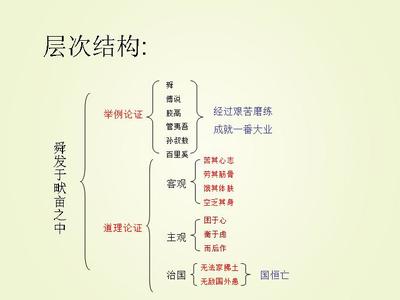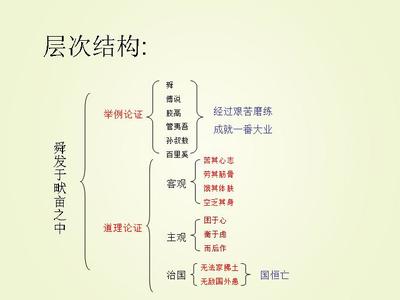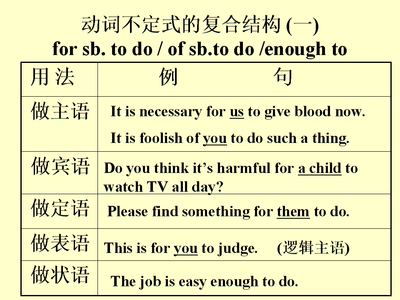动词不定式练习(比较基础的练习)
1.I advised _________ at once.
A.him to starting B.him tostartC.tostartingD.to start
2.You shouldn’t allow ________ games near the classroom, forit’s too noisy.
A.studentplaying B.toplayC.students to play D.to playing
3.Don’t forget ________ the letter for me on your way home.
A.postB.topostC.postingD.posted
4.Have you forgotten ________a ruler from Betty? Please remember________it to her tomorrow.
A.borrowing, toreturnB.borrowing, returning C.to borrow, toreturn D.toborrow, returning
5.I forget _______ them _______ in the school garden.
A.allowing, playing B.allow, to playC.allowing, to play D.to allow, playing
6.He finished his homework and then went on _________ me.
A.helpingB.with help C.with helping D.tohelp
7.Don’t get _________ in the rain.
A.to be caughtB.catchingC.tocatchD.caught
8.I haven’t got a chair _______. Will you make room for me?
A.tositB.to sit inC.forsittingD.sitting
9.The teacher forbade ________ our seats.
A.us to leaveB.us leavingC.toleaveD.to leaving
10.When do you think we’ll leave tomorrow? You’d better ______ready at seven o’clock.
A.tobeB.beC.beingD.been
11.You had better ________ your shoes _______.
A.to have,mendedB.have,mendedC.have, mending D.have,mend
12.You’d better _________ when you come in.
A.not to wake upmeB.not to wakeme up C.notto wake upmeD.not to wake me up
13.---Do you often have someone _________ your clothes?
---Yes, I often have them________.
A.wash, towash B.towash,washedC.washed,washD.wash, washed
14.Mary had her friend ________ the best one.
A.chooseB.chosenC.choseD.to choose
15.In those days my family didn’t have enough room ________.
A.toliveB.livinginC.to liveinD.living
16.My grandfather seems to have a lot _______.
A.worryabout B.to worryingabout C.to beworriedD.to worry about
17. I’m sorry ____ told you about the accident at the time,
A. to havenot B. to nothave C. notto have D. not having
18.The girl was made _________ she didn’t love at all.
A.marry a man B.to marry aman C.to marry with a man D.marriedwith a man
19.Don’t make him _______ it if he doesn’t want to.
A.doB.todoC.doingD.that he do
20. As a result of his laziness , he failed ______ his work intime .
A. andfinished B. tofinish C.finishing D. to finished
21.He raised his voice so as to make himself _________.
A.hearB.hearingC.beheardD.heard
22. It’s wrong _____ help him.
A. for youtoB. for you nottoC. of you to D. of you notto
23.I was deep in thought, I didn’t notice _______.
A.him to comein B.him comeinC.he comeinD.coming
24.---“How about a drink?”
---“I’d rather ________something to eat.”
A.haveB.to haveC.hadD.having
25. She made a candle____ us light.
A.give B.gave C. togive D.given
26.When the teacher came in, the children pretended ________attentively.
A.readingB. to be readC. being read D. to bereading
答案:摁住此处拖拽
1.B advise sb. to do something
2.C allow sb to do sth
3.B 记住去做某事。
4.A doing 表示完成的动作,todo表示未做的,将来去做。
5.C
6.D 想一想go on to do(doing)的区别。
7.D 自己考虑一下。
8.B 动词不定式作定语,而且sit不及物。
9.A 动词不定式做宾补。但是记住这本结构更好。
10.B 11.B 第二个空为have sth done结构。
12.B
13.D 体会区别 have sth done和have sb dosth。
14. A have sb do sth
15. A 同第八题
16.D 不定式作定语
17.C 不定式表原因,而且动词不定式的动作在先。
18.B make sb to do sth的被动时,要加上to
19.A
20.B fail to do sth固定结构,todo作宾语。
21.D有点难度,自己按照正确答案的思路,再结合非谓语动词的各自特点(主动,被动),考虑一下。
22.D 从语法上看,C,D都对。自己考虑吧!
23.B感官动词的用法。如:see+sb+do,表示的过程。当然也可以是以下方式,see+sb+doing和see+sb+done,自己考虑一下区别吧!
24.A would(had)rather+do sth
25.C有点难度。这里make不是使役动词,而是实意动词,表示“做”,后面的不定式表示目的。
26.D to bedoing的动作与pretended 同时发生。
动词不定式
不定式由“to + 动词原形”构成,其否定形式是“not todo”。不定式可以带宾语或状语构成不定式短语,没有人称或数的变化。不定式可做主语、宾语、状语、表语和定语,但不能单独做谓语。
一、不定式的用法
1. 做主语
To see is to believe.
It is + adj./n. + to do Itis important to learn English.
How to work out the problem is important.
2. 做表语
To see is to believe.
My question is when to set off.
3. 做宾语
(1).He wanted to do it.
(2).I will show you how to get to the railway station.
(3).不定式短语做宾语时,如果带有宾补,则把不定式放在宾补之后,用形式宾语it
I find it interesting to learn English.
4. 做定语
(1).Would you like something to eat?
(2).不定式若为不及物动词或不定式所修饰的名词或代词是不定式动作的地
点、工具等,不定式后面要有介词。
He is looking for a room to live in.
There is nothing to worry about.
Please give me a knife to cut with.
(3).若所修饰的名词是time, place,或way介词可省
He had no place to live.
5. 做宾补
He asked me to do the work with him.
He wanted me to help him.
*在feel, hear, listen to, notice, observe, see, watch, have, let,make后做宾补不带to,变为被动要带to
I often hear him sing the song.
He is often heard to sing the song.
6. 做状语
表示目的,原因,结果,条件

I came here to see you. (表目的)
We were excited to hear the news. (表原因)
He hurried to school to find nobody there. (表结果)
He hurried to school, only to find nobody there. (表结果)
To look at him, you would like him. (表条件)
* too + adj. + to do(状语)
He is too old to do that.
The room is big enough to hold us.
7. 做独立成分
To tell the truth, I don’t agree with you.
二、不定式的时态
不定式的时态一般有三种形式,一般式,进行式,完成式。
(1).一般式 to do ,表示的动作通常与谓语的动作同时或几乎同时发生,或是在它之后发生。例如:
I saw him go out.
I plan to attend the meeting.
(2).进行式 to bedoing,表示谓语表示的动作(情况)发生时,不定式表示的动作正在进行。例如:
I am very glad to be working with you.
He is believed to be coming.
(3).完成式 to have done表示不定式的动作发生在谓语动词之前。例如:
I’m sorry to have kept you waiting.
He is believed to have come.
The novel is believed to have been translated into Chinese.
l在seem, appear, think, consider,believe等表示看法与想法的动词之后用动词完成式时,表示该动作先于另一个动作。此结构也常以it作形式主语的结构替代。例如:
He seems to have bought the new book.
= It seems that he has bought the new book.
三、不定式的语态
不定式的逻辑主语是其动作承受者时,通常用被动
一般式 to be done
完成式 to have been done
It’s a great honor to be invited to the party.
No harm seems to have beendone.
I had to shout to be heard.
四、不定式的形式
不定式在句中用主动还是被动式,多数情况下是容易判断的,但有时却比较复杂。请注意以下几点:
1. 不定式所修饰的名词或代词和不定式逻辑上构成主谓关系时,不定式往往用主动形式。
Have you got a key to unlock the door?( A key unlocks thedoor.)
2. 不定式和它前面被修饰的名词或代词构成逻辑上的动宾关系, 又和该句主语构成逻辑上的主谓关系时,不定式往往用主动形式。
I have got a letter to write.(I write a letter.)
He needs a room to live in.(He lives in room.)
I know what to do.(I do what.)
3. 不定式做表语形容词的状语,和句中主语构成逻辑上的动宾关系时,不定式多用主动形式。这是因为人们往往认为形容词后省去了forone或for people。例如:
He is hard to talk to.(for one to talk to him)
The book is difficult to understand.(for someone to understandthe book)
4. 在therebe的结构中,当说话人考虑的是必须有人去完成某件事时,不定式用主动形式,如说话人强调的是事情本身必须完成,则用被动形式。例如:
There is a lot of work to do.(Somebody has to do the work.)
There is a lot of work to be done.(The work has to be done.)
There is nothing to do.意为无事可做,感到十分无聊。
There is nothing to be done. 意为某东西坏了,无法使之恢复正常。
五、不定式to的省略
1. 在feel, hear, listen to, make, let, have, see, watch, notice,observe后,动词不定式做宾补时不用to
We hear him sing a song.
2. 在would rather…than, rather than等结构than的后用不带to的不定式
I would rather go out than stay at home.
He insisted on going back to his work rather than stay inhospital.
3. 在以why引导的疑问句中不带to
Why not have a rest?
4. 不定式动词在介词but, except,besides后面时,如果这些介词之前有行为动词do的各种形式,那么,这些介词后的不定式不带to,否则要带to。例如:
She could do nothing but cry.
What do you like to do besides swim.
I have no choice but to accept the fact.
六、不定式to不能省略
1.当一个不定式与另一个不定式对比时
To try and fail is better than not to try at all.
2.当省略前面出现过的动词时,动词可省,但to必须保留
The boy wanted to ride his bicycle in the street, but his mothertold him not to.
---I’ll be away on a business trip. Would you mind looking aftermy cat?
---Not at all. I’d be happy to.
3.当句中有并列不定式时
They have come to talk, to sing, to get drunk.
七、在forget, remember, try, regret, mean, stop后即可跟toso又可跟
doing,但意义不同
forget doing忘记做过某事remember doing 记得做过某事
to do忘了去做某事to do 记着去做某事
try doing尝试做某事mean doing 意思是
todo尽力去做某事to do 打算做某事
regret doing后悔做过某事stop doing 停止做某事
to do遗憾去做某事to do 停下来去做另一件事
Missing the train means waiting for another hour.
I mean to come early today.
八、在allow, permit, forbid, advise后接doing但如果后面有宾语sb.时,用todo形式
We don’t allow smoking in the office.
We don’t allow him to smoke in the office.
九、for sb. to do sth在句中的作用
- 作主语
It is quite possible for you to catch up with them in shorttime.
- 作宾语
I think it better for you to see the doctor.
- 作表语
What we want is for you understand the matter clearly.
- 作定语
He is an example for us to follow.
- 作状语
I sent him some pictures for him to see what Paris islike.(目的)
I’m sorry for you to think like that.(原因)
十、it is + adj. + for sb. + to do sth
it is + adj. + of sb. + to do sth
1.下列表示人物特征的形容词同of后的名词或代词关系密切,有意义上的主表关系,常与of搭配
brave, careful, careless, clever, considerate, cruel, foolish,good, honest, kind, nice, right, rude, stupid, silly, thoughtful,wise, wrong, etc.
It was very kind of you to come to help me.
=You were very kind to come to help me
2.下列表示事物性质的形容词同for后的名词或代词关系密切,没有意义上的主表关系,但与句中的不定式结构关系密切,有意义上的主表关系,常与for搭配。
Easy, hard, heavy, necessary, impossible, possible, important,difficult, etc.
It is hard for him to get rid of his bad habits.
For him to get rid of his bad habits is hard.
来源于网络,笔者编辑整理
 爱华网
爱华网



